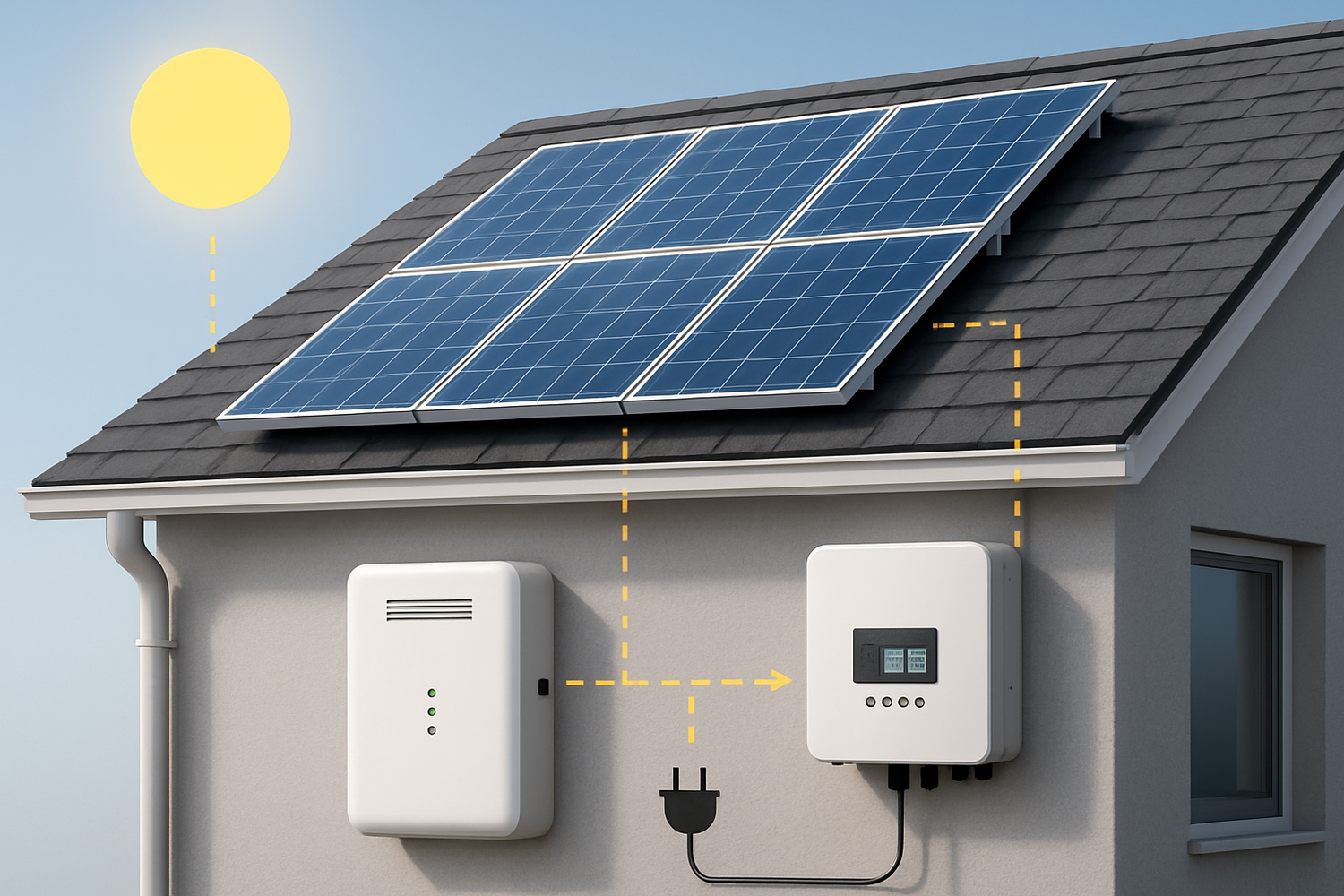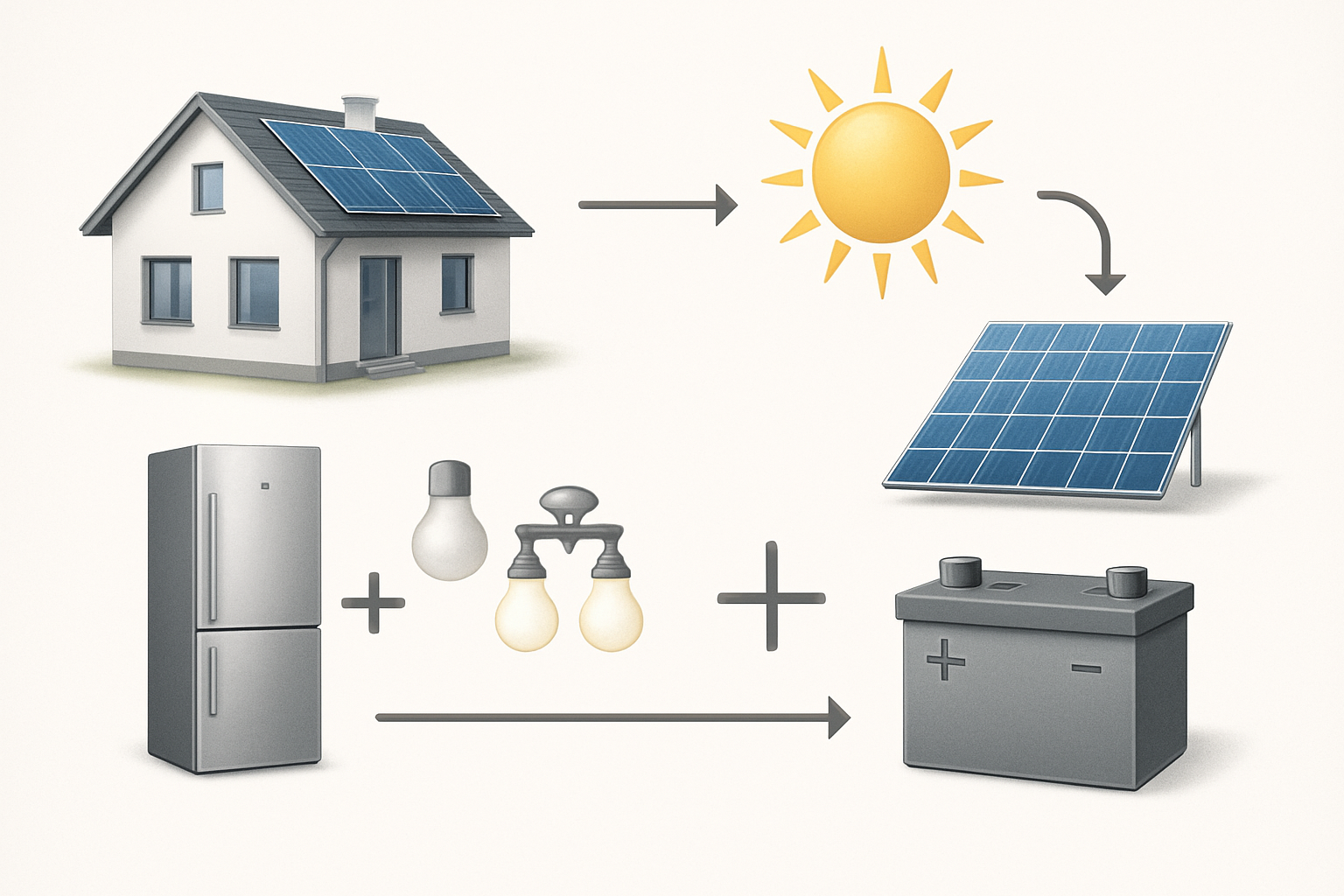Choosing the right size battery for your solar energy system is one of the most critical decisions you'll make. A system that's too small will leave you without power when you need it most. A system that's too large means you've spent money on capacity you'll never use. The goal is to find that perfect balance for efficiency, reliability, and cost-effectiveness. This guide provides a clear path to accurately determine your needs, moving beyond simple calculators to a full understanding of the process.
Chapter 1: The Foundation: Accurate Load Planning
Before you can calculate your battery needs, you must first understand your energy consumption. This process is called load planning or a load audit. It involves cataloging every device you intend to power and how much energy it uses. A precise load planning guide is the bedrock of an effective off-grid system sizing strategy.
1.1 Conducting Your Load Audit
Start by listing every appliance and electronic device. For each item, you need two pieces of information: its power consumption in watts (W) and the number of hours you expect to use it each day. You can usually find the wattage on the device's label or in its user manual.
To calculate the daily energy use in watt-hours (Wh), you use a simple formula for each device:
Device Wattage (W) × Daily Hours of Use = Daily Energy Consumption (Wh)
Summing the watt-hours for all your devices gives you your total daily energy requirement. For a more detailed walkthrough on this process, see A Pro's Guide to Load Planning for Battery Storage Systems.
Sample Load Calculation Table
| Appliance | Power Rating (Watts) | Hours of Use per Day | Daily Energy (Watt-hours) |
|---|---|---|---|
| LED Lights (x5) | 50 W | 6 | 300 Wh |
| Refrigerator | 150 W (running) | 8 (cycle time) | 1200 Wh |
| Laptop | 65 W | 4 | 260 Wh |
| Television | 100 W | 3 | 300 Wh |
| Total | 2060 Wh |
1.2 Differentiating Essential and Non-Essential Loads
For systems designed for backup power, it's practical to separate your loads into "essential" and "non-essential" categories. Essential loads include critical appliances like refrigerators, medical equipment, and basic lighting. Non-essential loads might include entertainment systems or high-power kitchen appliances. This prioritization ensures that in a grid outage, your battery capacity is dedicated to what matters most.
Chapter 2: Core Calculations for Battery Capacity
With your total daily energy consumption calculated, you can move on to the battery capacity calculation. This involves more than just your daily watt-hours; you must also account for system inefficiencies and your desired level of energy security.
2.1 Factoring in Days of Autonomy
Days of autonomy refers to the number of consecutive days your battery bank can power your loads without receiving any charge from your solar panels. This is a crucial buffer for cloudy weather. For most residential off-grid systems, 1 to 3 days of autonomy is a common target. Your choice will depend on your local climate and how critical your power supply is.
The calculation is straightforward: Total Daily Energy (Wh) × Days of Autonomy = Total Stored Energy Needed.
2.2 Accounting for System Inefficiencies
No energy system is 100% efficient. Energy is lost during the conversion from DC (battery) to AC (appliances) by the inverter, and even during the charge and discharge cycle of the battery itself. The International Energy Agency (IEA) notes that battery systems can have a charge/discharge loss factor of around 10%. High-quality components, such as efficient solar inverters, help minimize these losses. It's standard practice to add a buffer of 15-20% to your total energy needs to compensate for these inherent losses. For deeper insights into these factors, our ultimate reference on solar storage performance offers a detailed analysis.
Chapter 3: Selecting the Right Battery Technology
The type of battery you choose significantly impacts your system's performance, lifespan, and the final battery capacity calculation. Different battery chemistries have different characteristics that must be considered.
3.1 Understanding Key Battery Metrics
Two of the most important metrics in battery sizing are Depth of Discharge (DoD) and battery voltage.
- Depth of Discharge (DoD): This represents the percentage of the battery's total capacity that is used. For example, a battery with an 80% DoD means you can use 80% of its capacity without causing damage. According to the International Renewable Energy Agency (IRENA), DoD is a key variable in sizing calculations.
- Battery Voltage: Systems are typically designed in 12V, 24V, or 48V configurations. This choice affects wire sizing and component compatibility. Higher voltage systems are generally more efficient for larger energy needs.
3.2 The LiFePO4 Advantage
For modern energy storage, Lithium Iron Phosphate (LiFePO4) batteries offer substantial benefits. They provide a much higher DoD—often 80-95%—compared to traditional lead-acid batteries. This means you can use more of the battery's rated capacity, resulting in a smaller and lighter battery bank for the same usable energy. LiFePO4 technology also delivers a longer lifespan, enhanced safety, and greater efficiency, making it an ideal choice for reliable home energy storage and off-grid solar solutions. To learn more about sizing this specific chemistry, check out The Ultimate LiFePO4 Battery Sizing Calculator Guide.
3.3 The Final Sizing Formula
Now, we can bring all these elements together into a comprehensive formula to find the required battery capacity in Amp-hours (Ah).
Required Ah = (Total Daily Wh × Days of Autonomy) / (System Voltage × DoD × System Efficiency)
Using our example from Chapter 1 (2060 Wh/day), let's assume:
- 2 Days of Autonomy
- 48V System Voltage
- 90% (0.9) DoD for a LiFePO4 battery
- 85% (0.85) Overall System Efficiency
Calculation: (2060 Wh × 2) / (48V × 0.90 × 0.85) = 4120 / 36.72 = 112.2 Ah
In this scenario, a 48V battery bank with a capacity of at least 115-120 Ah would be a suitable choice.
Chapter 4: Common Pitfalls and Advanced Considerations
Using a solar battery sizing tool is a great start, but understanding the context prevents costly errors. Improper sizing is a frequent issue that can compromise your entire investment.
4.1 The Risks of Improper Sizing
Getting the size wrong can lead to significant problems. Undersizing results in frequent shutdowns and can drastically shorten your battery's lifespan due to excessive discharging. Oversizing leads to a poor return on investment, as you've paid for capacity that goes unused. Both scenarios are best avoided, which is why understanding the variables is so important. For more on this topic, explore Oversizing vs. Undersizing Your Solar Battery: A Guide and Stop Guessing: 5 Common Home Battery Sizing Mistakes.
4.2 Future-Proofing Your System
Your energy needs may grow. Are you planning to purchase an electric vehicle in the future? The IEA highlights that the growth of EVs is a major driver of battery demand, and charging one at home will significantly increase your daily load. It is wise to plan for about 20-25% future growth. Opting for a scalable energy solution, such as a modular home energy storage system, allows you to easily add more battery capacity later without needing a complete system overhaul.
Furthermore, the U.S. Department of Energy is actively working to streamline the process of connecting solar and storage systems to the grid, indicating a strong future for these integrated solutions. Building a system that can adapt is a smart long-term strategy.
Your Path to Energy Independence
Accurately sizing your battery bank is a foundational step toward achieving energy independence. By conducting a thorough load audit, accounting for real-world conditions like system inefficiencies and days of autonomy, and selecting the right technology, you empower yourself to build a system that is both reliable and cost-effective. While a battery sizing calculator is a helpful tool, a true understanding of these principles ensures you make an informed decision tailored to your specific needs. By investing in a high-performance, scalable system using LiFePO4 batteries, you create a robust energy solution ready for today's needs and tomorrow's growth.
Disclaimer: The information provided in this document is for educational purposes only. It is not intended as financial or legal advice. Please consult with a qualified professional before making any investment decisions or implementing any energy system.





Leave a comment
All comments are moderated before being published.
This site is protected by hCaptcha and the hCaptcha Privacy Policy and Terms of Service apply.